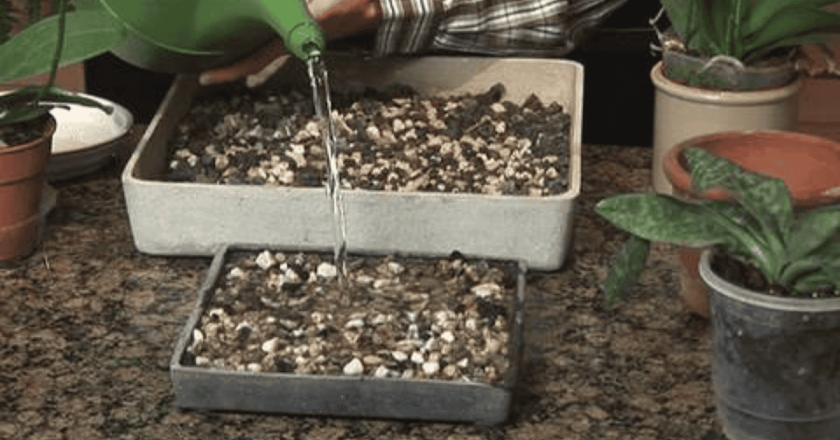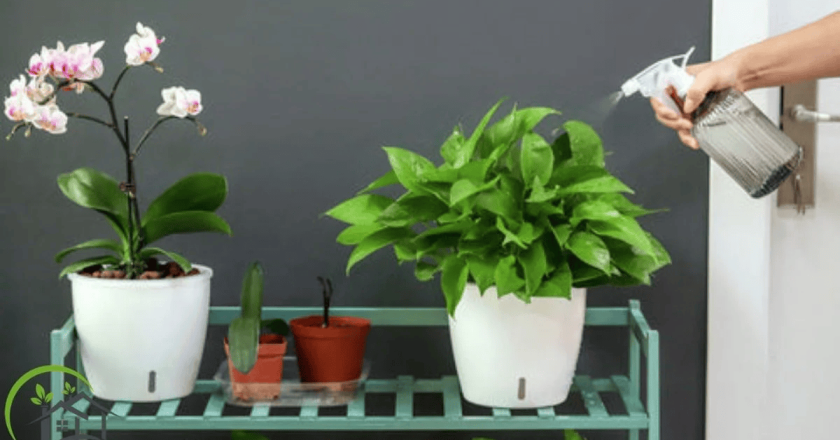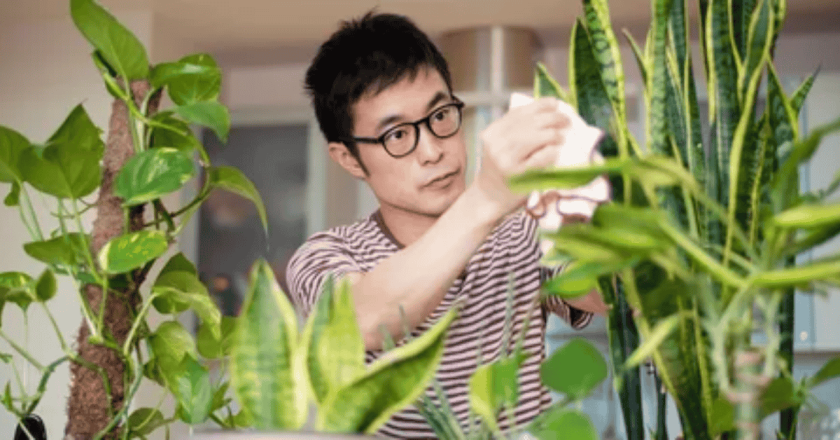Gardening in shady areas might seem limiting at first. No bright sun, no roses bursting in bold hues, and no heat-loving succulents basking under the summer sky.
But—hold on. A shade garden? It’s a quiet, magical place. A world where textures matter more than colours. Where delicate blooms sneak out from under leafy canopies, where greens come in more shades than you knew existed.
And with the right plants, that shady corner in your yard? It could become your favourite retreat.
Let’s walk through the world of shade-loving plants and see what thrives when the sun steps aside.
🌿 Understanding Shade in the Garden
Before you plant anything, you need to understand what kind of shade you’re working with:
-
Full shade is defined as areas that get less than 3 hours of direct sunlight per day (e.g., behind walls or under dense tree cover).
-
Partial shade: Spots that receive filtered light or about 3–6 hours of morning or late afternoon sun.
-
Dappled shade: Light passing through tree branches. Perfect for many woodland plants.
Knowing this helps you pick the right plants that grow in shade, without trial and error.
🌱 Top Shade-Loving Plants to Consider
A shady garden doesn’t mean dull or lifeless. Some vibrant, textured, and resilient plants prefer partial to full shade. Many plants are ready to thrive whether working with a dense tree canopy, a north-facing wall, or a shadowed patio.
Here are 25 shade-loving plants with unique traits, ideal growing conditions, and practical tips.
🌿 Vinca Minor (Dwarf Periwinkle)
-
Type: Groundcover
-
Color: Purple-blue flowers
-
Height/Spread: 4–6 inches tall, spreads up to 18 inches
-
Zone: 4–8
-
Special Traits: Evergreen, deer-resistant, erosion control
This fast-spreading vine brings a carpet of purple blooms from late spring to early fall. It’s perfect for slopes, under shrubs, or along shady pathways.
🌱 ‘Chocolate Chip’ Bugleweed (Ajuga reptans)
-
Type: Groundcover
-
Color: Violet-blue flower spikes, dark glossy foliage
-
Height/Spread: 3–6 inches tall, spreads indefinitely
-
Zone: 4–9
-
Special Traits: Weed-suppressing, low maintenance
Dense foliage and small spikes of flowers make this a favorite for filling tough spots. It also works well in poor soils and shady borders.
🌾 ‘Chantilly Lace’ Goatsbeard (Aruncus dioicus)
-
Type: Perennial
-
Color: Creamy white plumes
-
Height/Spread: Up to 3 feet tall
-
Zone: 3–7
-
Special Traits: Deer-resistant, upright habit
Tall and elegant, it resembles a shade-friendly astilbe and adds vertical interest to shady beds.
🍂 Cherry Heuchera (Coral Bells)
-
Type: Perennial
-
Color: Vibrant orange-red foliage
-
Height/Spread: 10–12 inches tall, 12–18 inches wide
-
Zone: 4–9
-
Special Traits: Evergreen in mild climates, drought-tolerant
A standout for its foliage alone, Heuchera thrives in containers or borders and adds warmth to cool garden corners.
💙 Siberian Bugloss ‘Queen of Hearts’ (Brunnera macrophylla)
-
Type: Perennial
-
Color: Silver leaves with blue flowers
-
Height/Spread: 12–18 inches tall, clumps up to 2 feet wide
-
Zone: 3–8
-
Special Traits: Shade-tolerant, deer-resistant
Ideal for woodland gardens. The heart-shaped leaves create a shimmering ground cover in filtered light.
❄️ Blue Oat Grass
-
Type: Ornamental Grass
-
Color: Steel blue foliage
-
Height/Spread: 2–3 feet tall and wide
-
Zone: 4–8
-
Special Traits: Evergreen, cold-hardy
It maintains its color year-round, making it great for winter interest. Use as an accent or edge planting.
🐝 Foxglove (Digitalis purpurea)
-
Type: Biennial
-
Color: Pink, purple, white, yellow
-
Height/Spread: Up to 5 feet tall
-
Zone: 4–9
-
Special Traits: Pollinator-friendly, toxic if ingested
Striking spires of bell-shaped flowers attract bees and butterflies. Best in part shade with moist soil.
🌸 Gigantea Primrose (Primula gigantea)
-
Type: Perennial
-
Color: Yellow, pink, purple blooms
-
Height/Spread: 6–12 inches tall
-
Zone: 3–8
-
Special Traits: Cool-season bloomer
Primroses are early risers in spring. They prefer cool climates and light shade, perfect for under deciduous trees.
🟣 Browallia (Bush Violet)
-
Type: Annual
-
Color: Violet-blue, white
-
Height/Spread: 12 inches tall and wide
-
Zone: 9–11 (annual elsewhere)
-
Special Traits: Mounding habit, shade-tolerant containers
Excellent in hanging baskets, window boxes, or borders where impatiens struggle.
🌿 Hostas
-
Type: Perennial
-
Color: Variegated foliage, lavender or white blooms
-
Height/Spread: 4 inches to 3 feet tall
-
Zone: 3–9
-
Special Traits: Endless variety, foliage-focused
Choose from hundreds of varieties. Ideal for layering and contrast in shade gardens.
🍇 Sweet Potato Vine ‘Marginata Lime’
-
Type: Annual vine
-
Color: Lime green, burgundy, or purple
-
Height/Spread: Trails up to 6 feet
-
Zone: 9–11
-
Special Traits: Striking foliage, container-friendly
This vining plant shines in mixed containers and shady hanging baskets.
🌺 Begonias
-
Type: Annual or tender perennial
-
Color: Red, white, pink, orange
-
Height/Spread: 6 inches to 3 feet
-
Zone: 9–11 or annual
-
Special Traits: Showy blooms, shade-loving
From tuberous to wax-leaf types, begonias light shade beds or porch pots.
🌻 Ligularia
-
Type: Perennial
-
Color: Yellow, daisy-like flowers
-
Height/Spread: 3–8 feet tall, wide spread
-
Zone: 4–9
-
Special Traits: Bog-tolerant, large foliage
Loves moisture and shade. Ideal near ponds or damp garden spots.
💐 Viola Bambini
-
Type: Annual (reseeds in cool climates)
-
Color: Purple, white, yellow
-
Height/Spread: 4–8 inches
-
Zone: 5–9
-
Special Traits: Self-seeding, cold-tolerant
Great for edging and early spring color. Needs shade in summer heat.
🍊 Epimedium ‘Orange Queen’
-
Type: Perennial
-
Color: Orange to salmon blooms
-
Height/Spread: 8–12 inches tall, wide spread
-
Zone: 3–9
-
Special Traits: Drought-resistant, long-lived
Unique blooms and heart-shaped foliage make this ideal for dry shade.
🌱 Brunnera ‘Jack Frost’
-
Type: Perennial
-
Color: Blue flowers, silvery leaves
-
Height/Spread: 12–18 inches
-
Zone: 3–8
-
Special Traits: Foliage interest, early bloomer
Looks like a living frost pattern. Pairs well with hostas or ferns.
❤️ Dicentra (Bleeding Heart)
-
Type: Perennial
-
Color: Pink, white heart-shaped flowers
-
Height/Spread: 1–3 feet
-
Zone: 3–9
-
Special Traits: Spring bloomer, classic romantic look
It goes dormant in summer, so combine it with later bloomers.
🌿 Tradescantia (Spiderwort)
-
Type: Perennial
-
Color: Purple, pink, blue
-
Height/Spread: 6 inches to 3 feet
-
Zone: 4–9
-
Special Traits: Low-maintenance, reblooms
Daily blooms open in the morning and close by afternoon.
🌸 Hellebore (Lenten Rose)
-
Type: Perennial
-
Color: White, pink, purple, near-black
-
Height/Spread: 1–3 feet
-
Zone: 3–9
-
Special Traits: Winter bloomer, evergreen
Flowers before snow even melts in some climates—remarkably hardy.
🍃 Japanese Painted Fern
-
Type: Fern
-
Color: Silver-green with burgundy veins
-
Height/Spread: 12–24 inches
-
Zone: 3–8
-
Special Traits: Lush, textured groundcover
Pairs beautifully with darker foliage for contrast.
🌼 Bletilla (Ground Orchid)
-
Type: Perennial bulb
-
Color: Lavender, pink
-
Height/Spread: 12–24 inches
-
Zone: 5–9
-
Special Traits: Hardy orchid, shade-friendly
Plant in fall for spring blooms in lightly shaded areas.
☁️ Tiarella (Foamflower)
-
Type: Perennial
-
Color: White or pink foamy blooms
-
Height/Spread: 8–12 inches
-
Zone: 4–9
-
Special Traits: Foliage patterns, pollinator-friendly
Delicate but durable, great for woodland paths.
🔥 Coleus
-
Type: Annual or tender perennial
-
Color: Foliage in lime, red, magenta, purple
-
Height/Spread: 1–3 feet
-
Zone: 10–11
-
Special Traits: Colorful leaves, adaptable
Some varieties now tolerate sun—check the label.
💧 Lobelia
-
Type: Annual
-
Color: Blue, white
-
Height/Spread: 6–8 inches
-
Zone: 10–11
-
Special Traits: Cascading, cool-season bloomer
Needs constant moisture. Cut back midseason to revive growth.
🌾 Japanese Forest Grass (Hakonechloa)
-
Type: Perennial ornamental grass
-
Color: Bright chartreuse to golden
-
Height/Spread: 12–18 inches
-
Zone: 5–9
-
Special Traits: Graceful, layered groundcover
Ideal for adding flow and light to shaded garden paths.
🌸 Ground Covers That Love the Shade
Shade is tricky, but ground covers are a gardener’s secret weapon. They reduce weeds, hold moisture, and cover barren soil.
Try these:
-
Sweet potato plant – Fast-growing, heart-shaped leaves, and visually stunning.
-
Perennial ground cover like lamium or bugleweed.
-
Vines for shade like English ivy or climbing hydrangea are great for vertical interest or backyards with canopy setups.
🌳 Shrubs and Bushes That Don’t Need Sun to Shine
Surprisingly, many shrubs for shade are tough, beautiful, and resilient.
-
Shade-loving shrubs like boxwood, hydrangea, and azaleas love filtered light.
-
Bamboo, though technically a grass, offers privacy and elegance.
-
Bushes that grow in shade, including camellia or rhododendrons, thrive under tree canopies.
Need shrubs for privacy? Choose tall, dense varieties that tolerate partial to full shade.
🌞 Wait—What About Sun-Loving Plants?
You might be surprised, but some sunflowers (not sunflowers) and hostas for sun varieties exist. These tolerate partial shade or sunny borders, so mix them carefully if your garden has shifting light.
🪴 Container and Patio Shade Ideas
For patios or small spaces, go vertical or container-based.
-
Use patio shade or sun umbrella setups to mimic natural conditions.
-
Patio sun shade structures help extend your growing space into seating areas.
-
Good potted options: coleus, vinca plants, caladium, or begonia.
Want a shade of window privacy boost? Try ornamental grasses or trailing vines in pots beside windows.
🌼 Blooming Beauties for Low-Light Flower Beds
Let’s not forget about blooms. Here are more flowers that like shade:
-
Begonias (classic indoor/outdoor crossovers)
-
Impatiens (ideal for mass planting)
-
Bleeding heart (romantic, arching blooms)
-
Blue perennial flowers like brunnera or forget-me-not
All excellent choices for those deep shade gardens or tucked-away corners.
🌾 For All-Season Landscaping
Want a garden that evolves throughout the year?
-
Mix evergreen shrubs, fall garden plants, and spring flowers.
-
All seasons landscaping is all about combining types of plants for long-term interest.
Examples:
-
Spring: Primrose, Viola, Bleeding Heart
-
Summer: Astilbe, Coleus
-
Fall: Ornamental grasses, Periwinkle, blue color
-
Winter: Evergreen shrubs, textured barks
🧑🌾 Planting Tips for Shade Areas
A few overlooked details can make or break your shade garden:
-
Soil matters. Enrich it with compost—shade plants love loose, moist soil.
-
Spacing is key. Don’t crowd plants. Shade slows evaporation, so airflow is essential.
-
Mulch generously. Holds moisture and prevents weeds.
-
Use ground orchids and quince varieties as surprise showstoppers.
Want to reduce maintenance? Go for low-light interior plants like snake plant or pothos in shady porch areas.
💡 Common Shade Garden Mistakes
Even experienced gardeners slip up when it comes to shade. It’s tricky terrain—quite literally. Here are a few common mistakes to watch out for and how to fix them.
Mistake 1: Assuming all shade is the same
Shade isn’t just shade. There’s morning shade, afternoon shade, filtered light, deep shadow… and they all affect plants differently.
Fix: Spend a day tracking how sunlight moves across your space. You never noticed some “shady” spots get a few solid hours of light. Use that knowledge to match plants to their perfect place.
Mistake 2: Using only green-on-green
It’s easy to default to foliage-heavy choices like ferns and hostas. But too much green, without contrast, can make your garden feel flat.
Fix: Mix in flowers that grow in shade, like violas, astilbe, or brunnera. Go bold with blue plants or types of purple flowers for added dimension.
Mistake 3: Ignoring drainage
Shade gardens often sit under trees or next to buildings—places where water tends to pool. But not all shade plants love wet feet.
Fix: Improve soil structure. Add compost or sand to clay-heavy areas. Raised beds or mounded plantings can also help keep roots drier without sacrificing moisture retention.
✅ Quick Planting Guide
| Plant Name | Shade Type | Feature | Maintenance Level |
|---|---|---|---|
| Hosta | Full to Partial | Foliage variety | Low |
| Vinca (Periwinkle) | Full to Dappled | Ground cover + flowers | Low |
| Astilbe | Partial to Full | Feather-like blooms | Medium |
| Coleus | Partial | Colorful leaves | Medium |
| Impatiens | Full to Dappled | Bright flowers | High |
| Ferns | Full | Texture-rich filler | Low |
| Camellia | Partial | Evergreen, flowering shrub | Medium |
| Bleeding Heart | Dappled | Romantic spring bloom | Medium |
| Brunnera | Dappled | Heart-shaped, blue flowers | Low |
🎯 Final Takeaway
Shade gardens don’t have to be dull. In fact, with a bit of planning, they can be your lush, inviting, and meditative spaces. The soft shadows. The layered greens. The unexpected pops of colour.
You create a beautiful, more sustainable, and climate-friendly ecosystem by combining shade-loving shrubs, ground covers, and flowers that thrive in the shade.
So, don’t be discouraged if you’re working with less-than-sunny spaces. Just change the plants, not your vision.
Also Read:
- Garden Calendar 2025: Best Times to Plant Flowers & Veggies
- 23 Blooming Indoor Plants to Brighten Your Home This Winter
- Care Tips for Christmas Cactus That Blooms Every Year
- How to Care for a Money Tree, the Luckiest Indoor Plant
- 33 Best Plants for Your Bathroom to Add a Spa-Like Feel
- Snake Plant Care Guide | Sansevieria Tips for Indoors
- Top Drought-Resistant Plants for a Low-Water Garden
- Peace Lily Care Guide | Thriving Spathiphyllum Indoors
- Mosquito Repellent Plants: 10 Outdoor Herbs & Flowers
- How to Create a Colorful Garden for All Season
FAQs
Q: What are the best flowers for deep shade?
A: Try astilbe, bleeding heart, brunnera, and vinca flowers.
Q: Can I grow vegetables in shady areas?
A: Leafy greens like lettuce or spinach can tolerate partial shade, but fruiting plants need more sun.
Q: Are there shrubs that grow in deep shade?
A: Yes—rhododendrons, hydrangeas, and boxwood are good picks.
Q: How can I decorate a patio with shade plants?
A: For shade, use vertical space, patio shades outdoors, and containers with mixed foliage plants like coleus, ferns, or vines.




